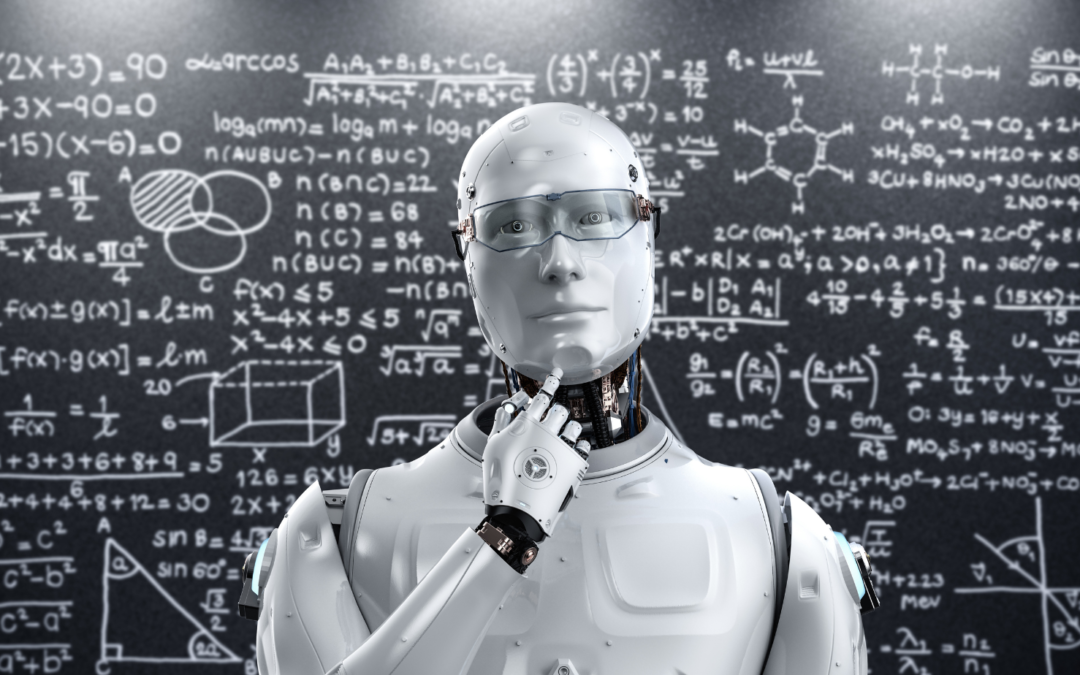As a bonafide tech-fanatic, I genuinely believe that Machine Learning (ML) is not just the cog in the machine but actually the engine propelling us headfirst into this digital age.
Whether it’s receiving spot-on recommendations for your next binge on Netflix or engaging with virtual assistants like Alexa – who seems to know you better than your spouse – it’s clear our lives are considerably intertwined with machine learning.
To be fair, these AI-powered systems may fly under most people’s radar, but their reach and impact are undeniable.
Isn’t it intriguing how effectively these systems seem to ‘grow’ smarter? It’s akin to feeding a relentlessly hungry brain! The more data they gobble up, the sharper their predictions become – mirroring almost perfectly how neural networks in our brains learn from past experiences.
They’re essentially picking up new tricks as we do!
In this article, I’ll lift the veil off ten standout examples of machine learning applications that have seamlessly blended into today’s world. So buckle up for an exciting trip through a landscape where machines appear eerily ‘intelligent’.
Key Takeaways
- Machine learning is a part of artificial intelligence that makes computer systems smart by allowing them to learn from data without being specifically programmed.
- Popular machine learning applications include social media features on platforms like Facebook, product recommendations on sites such as Etsy and Netflix, image recognition by companies like Apple and Microsoft, sentiment analysis through Yelp reviews, automating employee access control, marine wildlife preservation efforts, regulating healthcare efficiency and medical services, predicting potential heart failure risks, advancements in the banking domain, and language translation using tools like Google Translate.
- Machine learning in healthcare has revolutionized personalized treatment plans for patients, genetic analysis for tailored medication regimens, cancer prognosis accuracy improvement as well as drug discovery optimization.
What is Machine Learning?
Machine learning is a part of artificial intelligence. It makes computer systems smart. This means they can learn from data we give them without us telling them exactly what to do.
They use math tricks called “statistical techniques“. These tricks let the computers change and get better on their own.
This gets exciting when we see these smart systems do things we did not program into them. We call this “unprogrammed behaviors“. So, if we present new conditions or problems to the system, it finds its way around them by itself! Isn’t that amazing? Machine learning fuels many things you might know about, like recommendation systems at Netflix or image recognition in your phone’s photo gallery!
Popular Machine Learning Applications and Examples
Popular machine learning applications include social media features on platforms like Facebook, product recommendations on sites such as Etsy and Netflix, image recognition by companies like Apple and Microsoft, sentiment analysis through Yelp reviews, automating employee access control, marine wildlife preservation efforts, regulating healthcare efficiency and medical services, predicting potential heart failure risks, advancements in the banking domain, and language translation using tools like Google Translate.
Social Media Features (Facebook)
Facebook learns from your clicks. It uses machine learning to offer fun and useful stuff. When you like a post, it notes that. Then it shows more posts with the same topic. Facebook also connects you with new friends using this method.
Machine learning helps keep Facebook safe too. It finds fake accounts and spam fast, then gets rid of them. The same system can find bad stuff in posts or pictures that go against the rules.
It takes those down right away to keep Facebook friendly for everyone.
Ads on Facebook get a boost from machine learning as well! Ads reach people who want to see them thanks to smart targeting tools powered by AI models capable of analyzing billions of data points in real time.
Want tips on groups or pages? Machine learning has got you covered there as well! Your past activity on Facebook guides these recommendations so they fit your interests perfectly.
Last but not least, all the data is monitored which allows tracking user engagement, reach and other metrics —all automated through systems built around machine learning algorithms.
Product Recommendations (Etsy, Netflix)
Etsy and Netflix make use of smart machines. They help you find what you like! Machine learning works behind the scenes to do this. It looks at how users act and what they choose. Then, it makes choices that fit each person’s likes.
For example, if on Etsy you often look for hand-painted mugs, next time you log in, there will be more of these in your feed! In the same way, Netflix may show a new comedy movie to someone who watches a lot of funny shows.
The goal is to make all suggestions better suited for each user over time. This happens thanks to artificial intelligence that keeps learning from data analysis results every day!
Image Recognition (Apple, Microsoft, Waymo)
Apple, Microsoft, and Waymo are companies that use image recognition in their products and services. Image recognition is a technology that allows machines to understand and interpret visual information.
It involves computer vision, object detection, pattern recognition, visual perception, image analysis, deep learning, artificial intelligence (AI), machine vision, image processing, and neural networks.
These algorithms can classify and recognize different objects and features in digital images. In the case of Apple’s Face ID and Waymo’s self-driving cars, image recognition plays a crucial role in providing accurate and reliable results.
Sentiment Analysis (Yelp)
I use machine learning algorithms to analyze the sentiment of Yelp reviews. I can determine whether a review is positive, negative, or neutral. This helps businesses understand customer feedback and make better decisions.
With sentiment analysis on Yelp, we can identify trends and patterns in customer sentiment over time. Our machine learning models automate this process, saving time and resources. We can even predict the sentiment of new reviews based on patterns in existing data.
Automating Employee Access Control
Machine learning technology plays a crucial role in automating employee access control. It utilizes advanced algorithms to determine the appropriate level of access that employees need in different areas.
By using biometric identification and other identity verification methods, machine learning enhances security measures by accurately identifying and verifying employees. This technology can be seamlessly integrated with existing access control systems to automate the authentication process, eliminating the need for manual intervention.
Not only does this improve efficiency, but it also reduces the risk of unauthorized entry into sensitive areas. Automating employee access control is an effective way for organizations to enhance security and streamline their operations while ensuring that only authorized personnel have access to restricted areas.
Marine Wildlife Preservation
I love how machine learning is being used to help preserve marine wildlife. It’s amazing how these algorithms can develop behavior models for endangered species and predict their movements.
Image recognition technology is also being used to identify and track specific marine species, which helps with monitoring and protection efforts. Another interesting application is using acoustic data analysis to detect and classify different marine mammal species underwater.
With machine learning, we can analyze large datasets of marine biodiversity and ecosystem data to inform conservation strategies. It’s exciting to see technology making a positive impact on the preservation of our precious marine animals.
Regulating Healthcare Efficiency and Medical Services
In the field of healthcare, machine learning plays a crucial role in improving efficiency and enhancing medical services. With its ability to analyze large amounts of data and identify patterns, machine learning enables healthcare providers to make informed decisions and deliver personalized treatment.
It helps in predicting potential heart failure by analyzing various factors such as patient history, symptoms, and demographics. Machine learning also aids in regulating healthcare operations by automating processes like patient scheduling and resource allocation.
By harnessing the power of artificial intelligence and data analysis, machine learning brings significant advancements to the healthcare industry, enabling better outcomes for patients.
Predicting Potential Heart Failure
Machine learning technology has advanced to the point where it can predict potential heart failure. By analyzing data related to heart health and using predictive modeling, machine learning algorithms can identify patterns and make accurate predictions about cardiac health.
This is a significant development in healthcare, as it allows for early detection and intervention for individuals at risk of developing heart conditions. The more data that is available, the higher the accuracy of these predictions becomes.
Machine learning’s integration into medical diagnosis and monitoring has revolutionized the field of cardiology and improved patient outcomes.
Banking Domain
In the banking domain, machine learning is used for various applications to improve efficiency and provide better services to customers. One example is fraud detection, where machine learning algorithms can analyze past fraud events to identify patterns and predict the likelihood of future fraudulent transactions.
This helps banks in preventing financial losses and protecting their customers’ accounts. Machine learning is also used for customer segmentation and credit risk analysis. By analyzing customer behavior and transaction data, banks can identify different customer segments and tailor their products and services accordingly.
Additionally, machine learning models can assess the creditworthiness of individuals by analyzing their financial history, enabling banks to make more accurate loan decisions based on predictive analytics.
Language Translation (Google Translate)
Google Translate is a really helpful machine learning application for translating languages. It can take text in one language and turn it into another language. Google Translate gets better at this by using lots of data, constantly improving its accuracy.
It can translate between many different languages, so you can communicate with people who speak different languages than you. You can use Google Translate on different devices and platforms, which makes it easy to access no matter where you are in the world.

Applications of Machine Learning in Healthcare
Machine Learning in Healthcare is revolutionizing the industry with applications such as personalized treatment, genetics and genomics, cancer prognosis, and drug discovery.
Personalized Treatment/Medication
Machine learning is revolutionizing healthcare by enabling personalized treatment and medication. With machine learning algorithms, medical data can be analyzed to develop tailored treatment plans for individual patients.
This means that each patient receives a customized approach to their care, based on their specific needs and characteristics. Genomic analysis is also being utilized in personalized medicine, as machine learning algorithms can analyze genomic data to guide treatment decisions.
This patient-centric care approach allows for adaptive therapy and data-driven treatment strategies, optimizing outcomes and improving patient experiences. In addition, machine learning is even being used to optimize drug dosages based on how patients respond, ensuring the most effective and safe medication regimens are prescribed.
Genetics and Genomics
In healthcare, machine learning has found valuable applications in genetics and genomics. With the help of machine learning algorithms, large genomic datasets can be analyzed to gain a better understanding of diseases and their treatment.
By using genetic markers, machine learning can predict an individual’s risk for certain diseases. These predictions can play a crucial role in early detection and prevention. Machine learning also aids in identifying different subtypes of diseases based on genetic data, allowing for more targeted treatments that consider the specific characteristics of each subtype.
Additionally, machine learning algorithms can analyze an individual’s genetic profile to predict how they will respond to certain drugs. This personalized approach helps optimize treatment plans for better outcomes.
Cancer Prognosis and Prediction
Machine learning can greatly contribute to cancer prognosis and prediction. By analyzing large volumes of patient data, machine learning algorithms can identify patterns and trends that may help predict the progression of cancer.
This technology, integrated into various aspects of healthcare, including cancer care, allows for more accurate predictions and personalized treatment plans. With the help of natural language processing (NLP), medical applications related to cancer prognosis and prediction can also analyze textual information such as medical records to further enhance accuracy and efficiency in diagnosis and treatment planning.
Drug Discovery/Manufacturing
Machine learning technology is being used in drug discovery and manufacturing processes to improve their accuracy and efficiency. With the help of machine learning algorithms, scientists can analyze large amounts of data, such as molecular structures, to identify potential drugs more quickly and accurately.
Natural Language Processing (NLP) techniques are also utilized in drug discovery and manufacturing to manipulate and analyze text data related to chemicals and biological compounds.
By applying machine learning, researchers can optimize the drug development process, leading to faster identification of potential treatments for various diseases.
Applications of Machine Learning in Finance
Machine learning is revolutionizing the finance industry with its applications in targeted account holder targeting, fraud detection, and loan eligibility prediction. Discover how these technologies are reshaping the financial landscape and improving decision-making processes.
Ready to dive deeper into the world of machine learning? Keep reading to find out more!
Focused Account Holder Targeting
Machine learning plays a crucial role in focused account holder targeting within the finance industry. By using machine learning algorithms, financial institutions can identify and target specific account holders for personalized financial services and offerings.
This allows them to better understand their customers’ needs and preferences, leading to more effective marketing campaigns and customer retention strategies. With the help of data analytics and predictive modeling, financial institutions can segment their customers based on various factors such as demographics, behavior, and transaction history.
This targeted approach enables personalized marketing efforts, helping to improve customer satisfaction and loyalty. Overall, focused account holder targeting powered by machine learning enhances decision-making processes in the finance industry by providing valuable insights for personalized financial services and datadriven strategies.
Fraud Detection
Fraud detection is one of the important applications of machine learning in finance. Machine learning algorithms are used to analyze financial transactions and identify fraudulent activities, such as credit card fraud.
These algorithms can classify data, determine the legitimacy of transactions, and calculate the probability of fraudulent activity. By using predictive analytics, machine learning helps in detecting and preventing fraud in real-time.
This technology enhances the efficiency and accuracy of fraud prevention measures by quickly identifying suspicious patterns or behaviors. With machine learning, financial institutions can better protect their customers’ accounts and ensure secure transactions.
Loan Eligibility Prediction
Machine learning plays a crucial role in predicting loan eligibility. With the help of machine learning algorithms, financial institutions can analyze large amounts of data to make accurate predictions about whether someone will be approved for a loan or not.
These models consider various factors and variables, such as credit history, income level, employment status, and more. By analyzing past loan data, machine learning algorithms can identify patterns that help predict future loan eligibility.
This data-driven approach helps lenders make more informed decisions and streamline their loan approval process.
Real-World Use Cases of Machine Learning
Real-world use cases of machine learning include image recognition in e-commerce, self-driving cars, virtual personal assistants, online fraud detection, stock market and day trading, and business applications such as McDonald’s, HubSpot, and ASOS.
Image Recognition in E-commerce
Image recognition is a really useful application of machine learning in ecommerce. It helps websites track what users are looking at and predict what they might be interested in buying.
This is done through computer vision and deep learning algorithms that analyze images to identify objects or patterns. For example, when you search for a specific item on an online store, the website can use image recognition to show you similar products that you might like.
Image recognition also has other uses beyond ecommerce, like facial recognition for security purposes or predicting travel times on maps. So it’s a really powerful tool that helps make our online shopping experiences better and more personalized.
Self-Driving Cars
Self-driving cars are an exciting application of machine learning and artificial intelligence. These autonomous vehicles use advanced technologies like computer vision, deep learning, and sensor technology to navigate the roads.
Machine learning algorithms help the car detect objects, analyze data in real-time, and make decisions based on that information. Natural language processing technology is also integrated into self-driving cars to understand voice commands from passengers.
Predictive analytics powered by machine learning can analyze historical traffic data to determine the best routes and optimize efficiency. Self-driving cars also use reinforcement learning to collect real-time data and learn from it, improving their performance over time.
Virtual Personal Assistant
Virtual personal assistants, like Amazon’s Alexa, Google Home, and Apple’s Siri, are intelligent virtual assistants that use machine learning technology. They rely on voice recognition to understand spoken commands and convert them into actions or text.
These assistants learn from user behavior to predict preferences and offer personalized suggestions. By analyzing data such as browsing history and previous purchases, they can make accurate recommendations and even suggest social media connections based on user interactions.
Through natural language processing, virtual personal assistants can understand speech signals and provide helpful responses. Their ability to adapt behaviors without explicit programming makes them powerful tools for enhancing productivity and convenience in our daily lives.
Online Fraud Detection
Online fraud detection is an important application of machine learning technology. With the help of adaptive algorithms and behavior analysis, machine learning models can analyze past fraud events and classify data to identify fraudulent activities in credit card transactions.
By calculating the probability of an action, these models aid in proactive fraud detection. Machine learning algorithms also have the ability to adapt to new conditions and develop behaviors not programmed in advance, making them effective in enhancing fraud detection systems.
This technology helps businesses understand their customers better and enables them to predict and prevent fraud.
Stock Market and Day Trading
In the world of finance, machine learning has proven to be a valuable tool in analyzing and predicting stock market trends. With its ability to process large amounts of data and identify patterns, machine learning algorithms can assist in making informed investment decisions.
For example, predictive analytics can help predict stock market performance based on historical data analysis. This allows traders to develop effective strategies and manage risks more efficiently.
Additionally, algorithmic trading is another popular application of machine learning in the stock market. By using complex algorithms, machines can execute trades automatically based on predefined rules and conditions.
This not only speeds up the trading process but also reduces human error.
Moreover, machine learning models are capable of detecting anomalies and potential risks in stock trading. By analyzing various factors such as market trends, news sentiment, or financial indicators, these models can flag suspicious activities or potential fraud.
Business Applications (McDonald’s, HubSpot, ASOS)
At McDonald’s, machine learning algorithms are used to improve the drive-thru experience by predicting customer orders and reducing wait times. By analyzing data, McDonald’s can also adjust menu prices based on demand and time of day using dynamic pricing models.
HubSpot utilizes machine learning to analyze customer data and provide personalized recommendations for marketing campaigns. It goes beyond just marketing as well, with machine learning helping in analyzing customer interactions and sentiment for personalized support in customer service.
ASOS uses machine learning algorithms to analyze customer behavior patterns and predict fashion trends, ensuring that they stay ahead in the ever-changing world of fashion.
Conclusion
In conclusion, machine learning has become an integral part of our daily lives, powering various applications that we often take for granted. From social media recommendations to image recognition and virtual assistants, the possibilities are endless.
With advancements in artificial intelligence and data analysis, machine learning continues to evolve and shape the way we interact with technology. As tech-savvy individuals, it’s important to stay informed about these applications and embrace the opportunities they bring.




